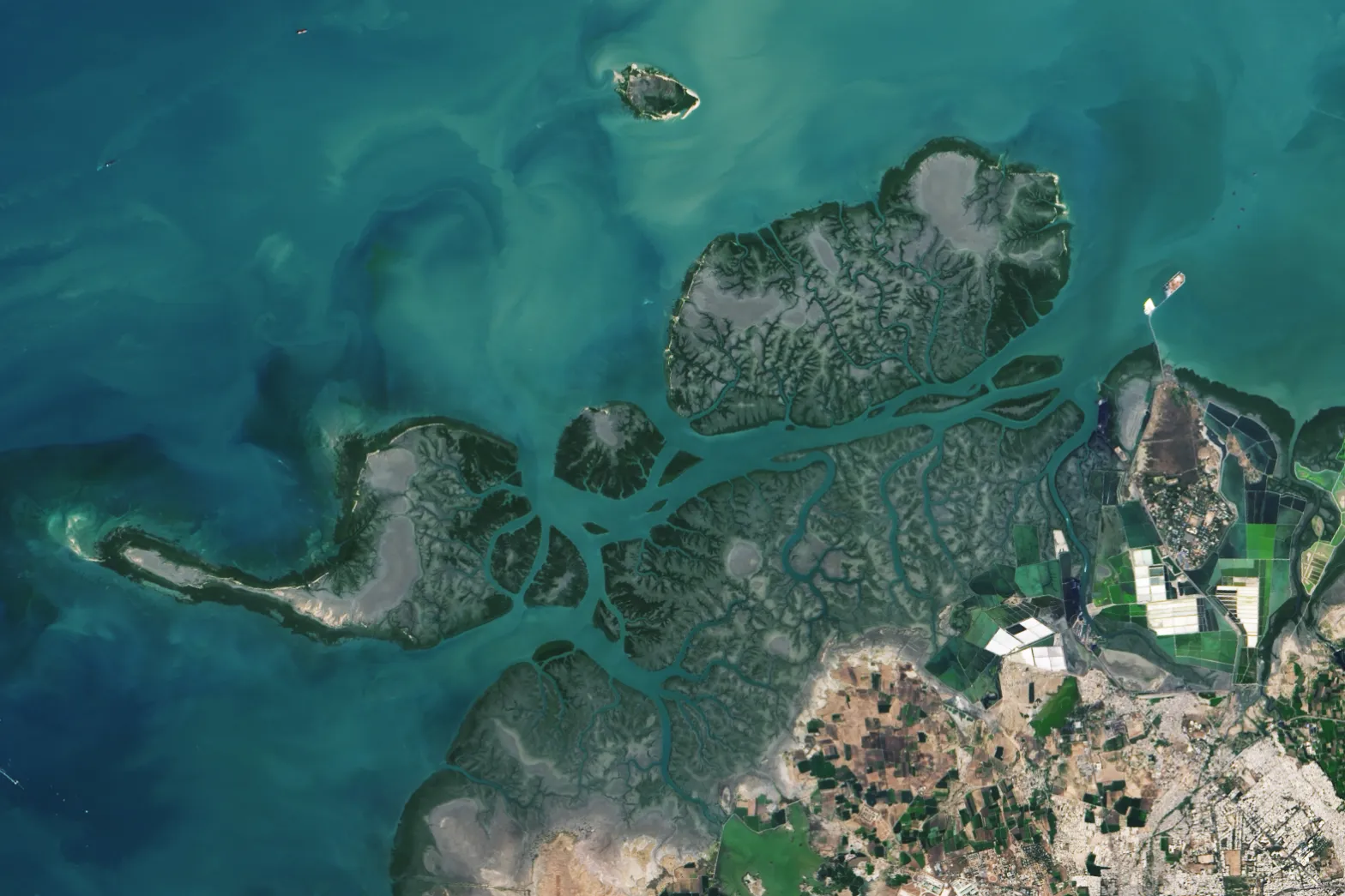Monitoring the Health of Our Planet using Earth Observations

A new book explores how Earth science knowledge addresses critical global challenges including sustainable development, disaster risk reduction, and climate change.
The world faces major challenges such as food insecurity, degradation of water quality, drought, deforestation, air pollution, and climate change. Key to addressing these issues is accurate and comprehensive information. Observations and measurements of Earth by instruments on satellites, airborne platforms, ground sensors, and citizen science observatories produce a wealth of data about the land, ocean, and air, and help to monitor changes over time. Insights from these data can be used to develop strategies to address societal challenges.
A new book in AGU’s Geophysical Monograph Series, Earth Observation Applications and Global Policy Frameworks, presents case studies of how Earth science information is utilized for sustainable development, in disaster response, resilience building and risk reduction, and to tackle climate change. We asked the book’s lead editor some questions about what’s in the book and why it’s so relevant.
How are data and insights from Earth observations relevant to driving progress on some of the major international UN agreements?
Earth observations provide spatial, spectral, and temporal information that can be processed and transformed into variables or high-level products that are useful to understand physical and biological Earth system phenomena, monitor development targets, and track progress against agreed-upon metrics such as the Sustainable Development Goals Global Indicator Framework (composed of 231 indicators).
Earth observations, models, and derived knowledge also help managers, policy makers, governmental and nongovernmental organizations, international bodies, civil society and the commercial sector evaluate the effectiveness and impacts of policy decisions across sectors, create maps and visualizations, analyze and forecast changes over time and assess alternative scenario planning.
What are some of the challenges of dealing with Earth observation data?
While Earth observations are a UN recognized, critical data source for monitoring and driving progress on global sustainability frameworks, UN Member States do not always recognize or have the capacity to fully leverage their value.
Challenges associated with the use of Earth observations at scale include data size and complexity, lack of “fit for purpose” data sets, capacity-related challenges, lack of standardization of data processing methods, and restrictive data policies, as well as lack of good practice use cases that others can consider and pursue. Our book describes progress and ongoing efforts to addressing many of these challenges.
What type of case studies are presented throughout this book?
We assembled a broad range of exciting case studies from local, national, regional, and international initiatives that showcase how insights from Earth observations help serve society.
Examples include successful use case scenarios of Earth observation-based water quality monitoring applications that facilitate reporting of related development indicators; case studies on climate and disaster risk reduction in growing urban settings, where the applications of Earth observations enable the development of risk-informed systems; and technology solutions, such as the Open Data Cube, that offer a strong potential to streamline data distribution and management for providers while lowering the technical barriers for end-users.

The Gulf of Kutch in Gujarat is home to India’s first national marine reserve that protects two major ecosystems: corals and mangroves. Like many others around the world, India’s coral reefs are threatened by bleaching and by human activity. Credit: NASA Earth Observatory (Public domain)
We also present work from multiple Group on Earth Observations (GEO) initiatives that are fostering user communities to identify needs and gaps, and co-develop Earth observation-based products needed by users including the GEO Global Agricultural Monitoring Initiative (GEOGLAM), GEO Blue Planet, Earth Observations for Sustainable Development Goals (EO4SDG), Global Observation System for Mercury (GEO4S4M), and GEO Data Access for Risk Management (DARMA).
What are some challenges that have come to light in these case studies and how can we learn from them?
For countries to tackle complex development challenges and meet their commitments mandated by global processes such as the Paris Climate Agreement, the 2030 Agenda for Sustainable Development and the Sendai Framework for Disaster Risk Reduction, they must adopt solutions that are integrated, i.e., approaches that target systems rather than individual, thematic sectors. Technological advancements such as cloud computing, artificial intelligence, and data storage coupled with principles of open science are enabling such integrated analyses.
For these efforts to be successful, however, new and sustained collaboration and effective partnerships among information producers, applications specialists, partners, decision makers and users are needed. This requires breaking down communication and coordination barriers between and across sectors, disciplines, scales, and policies.
The Group on Earth Observations, as exemplified by initiatives such as the EO4SDG initiative, provides an effective framework for bringing key actors together to improve the enabling environment that broadens the use of Earth observations to inform decisions and actions. In addition, national space agency programs, such as the NASA Earth Science Applied Sciences Program, are essential in connecting Earth science with more and new audiences to further economic development and sustainability and guide decisions at all levels of society.
Who will most benefit from these case studies and this book in general?
There are so many stakeholders, and this book has something for everyone! This includes community, municipal, city, state, federal, and private institutions involved in sustainable development, disaster management, climate adaptation and mitigation, urban planning, water resources management, land and coastal ecosystems management and natural capital accounting.
Basic and applied research scientists and GIS professionals interested in learning about existing initiatives and examples of Earth science applications for global sustainability frameworks will also greatly benefit from this book.
Earth Observation Applications and Global Policy Frameworks, 2022. ISBN: 978-1-119-53671-0. List price: $185 (hardcover), $148 (e-book)
Chapter 1 is freely available. Visit the book’s page on Wiley.com and click on “Read an Excerpt” below the cover image.
Editor’s Note: It is the policy of AGU Publications to invite the editors of newly published books to write a summary for Eos Editors’ Vox.